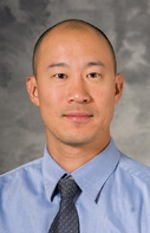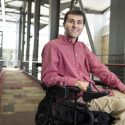Shared medical appointments: multiple benefits for patients, doctors
Twenty-six million Americans have chronic kidney disease, and kidney doctors need their patients to understand the complex, life-threatening condition. Kidneys cleanse the blood and, to slow their decline, patients must be aware of diet, exercise, lab measurements and the different options for dialysis.

Chan
That makes for a lot to squeeze into a 20-minute office visit, says Micah Chan, clinical chief of nephrology at the University of Wisconsin School of Medicine and Public Health. “In one-to-one visits, you often don’t have enough time to do all the education.”
To help transcend the time barrier, Chan began conducting shared medical appointments for people with kidney disease two years ago. All groups have at least five patients and remain together from the first meeting.
“Patients say they are learning a lot,” Chan says. “Usually, the spouse or significant other attends, and you can see how they enhance the learning. Patients may forget something, but the spouse can jot notes and bring them home, so the two work for the benefit of one.”
Chan’s chronic kidney disease groups — the third such set in the nation — meet every three or four months. His groups for patients on home dialysis, who have had kidney failure, meet once a month.
“These are the only shared appointments I know of in the world for home dialysis patients,” says Chan, “but this the perfect population for this approach.”
Shared appointments are also available for kidney stone patients treated by Roy Jhagroo at the School of Medicine, Chan notes. “The School of Medicine and Public Health has one of the most advanced, integrated kidney care units in the world.”
“When you see someone who has just learned they need dialysis, you are seeing them at a real low point. When they talk to the group about that, about where they are and how they are thankful to be alive, that touches you as a physician. You don’t treat them as a case but as a person.”
Micah Chan
The shared appointments are optional, and patients can drop out if they choose. All group members sign privacy forms, and any needed physical exams are done in private.
Shared appointments carry compelling logic, Chan says. “When kidney patients know more about their illness, they can benefit their health, so we need to go over the same educational topics for every patient. Why not do that in one setting, spend an hour and really get the benefits, rather than run through it in 20 minutes with a single patient?”
The potential for time saving is obvious, Chan says. “Normally in the clinic I can see seven patients in a half day, and I can see 12 to 15 with the shared appointments. There is a definite improvement in the waiting time for appointments, and in quality of life.”
“When you see someone who has just learned they need dialysis, you are seeing them at a real low point. When they talk to the group about that, about where they are and how they are thankful to be alive, that touches you as a physician. You don’t treat them as a case but as a person.”
Group sessions often include a presentation by a nutritionist, social worker, pharmacist or specialty nurse. But the benefits extend far beyond education, Chan says. “Many patients open up dramatically more than in one-to-one sessions. If one patient starts sharing, another shares, and they realize, ‘I am not alone, I’ve had that, too!'”
That’s been the experience of Sabine Lobitz, a home dialysis patient.” When you have a group of people who are doing exactly the same thing, and suffer from the same anxiety, they become so supportive of one another. When I am on the dialysis machine, I get really cold, and someone in the group mentioned using an electric blanket, and sure enough it works. That kind of support and added knowledge allows us to relax so much more.”
Chan mentions a patient he calls “John” who has been near death many times. “He’s been depressed, on the verge of wanting to stop dialysis, but patients in the group, and the providers, have encouraged him to continue to fight. He’s still young. He has his whole life ahead of him.”
John’s lab numbers — measuring the removal of toxins from his blood — have been improving, Chan says. “At the end of the group, he’s got a smile on his face. This is amazing; it’s why I went to medical school.”

